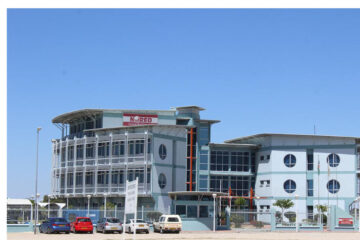Niël Terblanché
The strategic marketing of livestock remains a critical part of Namibia’s agricultural resilience and reflects a proactive approach to the severe drought conditions experienced nationwide.
As a result, there has been a sharp rise in livestock marketing activities, with record-breaking numbers reported for March 2024.
According to a detailed quarterly livestock report from Simonis Storm Securities, the month saw the highest monthly figure since August 2023 with the marketing of 34,196 cattle.
This surge in livestock movement includes 12,709 cattle slaughtered domestically and 21,487 exported live, mainly to South Africa.
The broader livestock sector, encompassing cattle, sheep, goats, and pigs, also saw an 8.4% year-on-year increase from March 2023, with a total of 141,492 animals marketed.
“The first quarter of 2024 has set a new benchmark for livestock marketing with 318,017 activities recorded, up from 259,743 in the previous year,” the research firm noted in its report.
The severe lack of rainfall in some regions is largely to blame for this spike, leading farmers to prepare for a challenging remainder of 2024.
The Livestock and Livestock Products Board (LPB) also confirmed that the increase in livestock sales is a direct consequence of the drought conditions, further exacerbated by lower prices offered by local abattoirs.
The board indicated that the goat sector, in particular, has experienced growth of 7.7% in marketing activities.
“Increased live exports primarily drive the growth of goat sales,” the LPB stated.
According to the LPB, the pork industry remains limited to domestic slaughtering, as the ceiling price for pork remained unchanged at N$51.03 per kilogram.
Regionally, South Africa continues to be the leading market for Namibian livestock, absorbing the majority of exports, which predominantly include sheep.
Following South Africa, Botswana, Angola, Zambia, and Zimbabwe also rank as significant importers of Namibian livestock.
The beef sector has shown notable growth, with 2,936 tons exported in the first quarter of 2024.
This represents a 106% increase year over year, according to the LPB.
The European Union remains a key market, taking in 43.5% of Namibia’s total beef exports, followed by the United Kingdom and Norway.
In the meantime, the United States of America has also emerged as a new market for Namibian beef.




